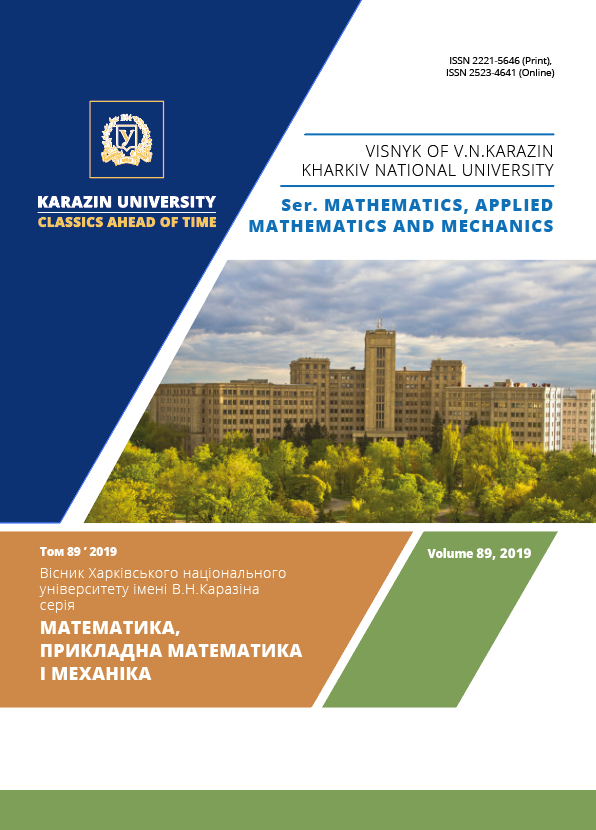Partial parabolicity of the boundary-value problem for pseudodifferential equations in a layer
Abstract
A nonlocal boundary-value problem for evolutional pseudodifferential equations in an infinite layer is considered in this paper. The notion of the partially parabolic boundary-value problem is introduced when a solving function decreases exponentially only by the part of space variables. This concept generalizes the concept of a parabolic boundary value problem, which was previously studied by one of the authors of this paper (A. A. Makarov). Necessary and sufficient conditions for the pseudodifferential operator symbol are obtained in which partially parabolic boundary-value problems exist. It turned out that the real part of the symbol of a pseudodifferential operator should increase unboundedly powerfully in some of the spatial variables. In this case, a specific type of boundary conditions is indicated, which depend on a pseudodifferential equation and are also pseudodifferential operators. It is shown that for solutions of partially parabolic boundary-value problems, smoothness in some of the spatial variables increases. The disturbed (excitated) pseudodifferential equation with a symbol which depends on space and temporal variables is also investigated. It has been found for partially parabolic boundary-value problems what pseudodifferential operators are possible to be disturbed in the way that the input equation of this boundary-value problem would remain correct in Sobolev-Slobodetsky spaces. It is also shown that although the properties of increasing the smoothness of solutions in part of the variables for partially parabolic boundary value problems are similar to the property of solutions of partially hypoelliptic equations introduced by L. H\"{o}rmander, these examples show that the partial parabolic boundary value problem does not follow from partial hipoellipticity; and vice versa - an example of a partially parabolic boundary value problem for a differential equation that is not partially hypoelliptic is given.
Downloads
References
A.A. Makarov. Parabolic boundary value problems for systems of pseudodifferential equations in an infinite layer, Differential Equations, 1996. - Vol.32, No. 5. - P.636-642.
L.R. Volevich. The Cauchy problem and related problems for convolution type equations, Advances in Mathematical Sciences, - 1972. - Vol.27, - Issue 4(166). - p.65-143.
A.A. Makarov. A criterion for the correct solvability of a boundary value problem in a layer for a system of linear equations in convolutions in topological spaces, Theoretical and applied questions of differential equations and algebra, Sb. scientific works. - Kiev: Naukova Dumka, 1978. - P. 178-180.
A.A. Makarov. The existence of a correct two-point boundary value problem in a layer for systems of pseudo-differential equations, Differential Equations, 1994. - Vol.30, No. 1. - P. 144-150.
A.A. Makarov. General boundary value problem in the infinite layer for systems of pseudo-differential equations with bounded symbols, Theory of functions, functional analysis and their applications, 1986. - Vol.46, - p.72-77.
L. Hormander. The Analysis of linear partial differential operators. II, Differential operators with constant coefficients. - Springer-Verlag. Berlin Heidelberg New York Tokyo, 1983. - 455 p.

This work is licensed under a Creative Commons Attribution-NonCommercial-NoDerivatives 4.0 International License.
The copyright holder is the author.
Authors who publish with this journal agree to the following terms:
1. Authors retain copyright and grant the journal right of first publication with the work simultaneously licensed under a Creative Commons Attribution License that allows others to share the work with an acknowledgement of the work's authorship and initial publication in this journal. (Attribution-Noncommercial-No Derivative Works licence).
2. Authors are able to enter into separate, additional contractual arrangements for the non-exclusive distribution of the journal's published version of the work (e.g., post it to an institutional repository or publish it in a book), with an acknowledgement of its initial publication in this journal.
3. Authors are permitted and encouraged to post their work online (e.g., in institutional repositories or on their website) prior to and during the submission process, as it can lead to productive exchanges, as well as earlier and greater citation of published work (see The Effect of Open Access).




